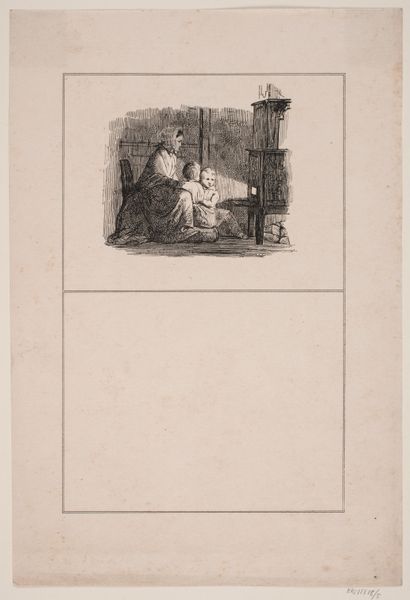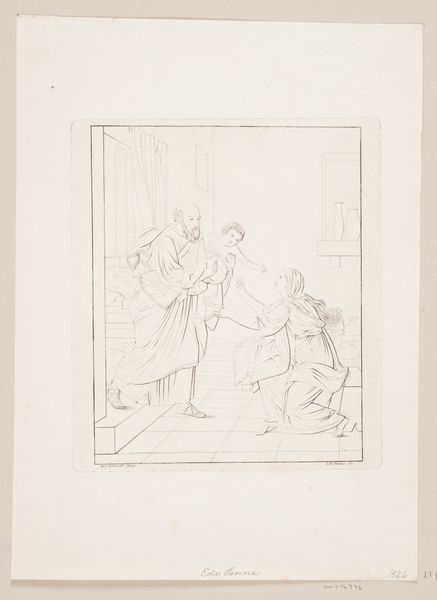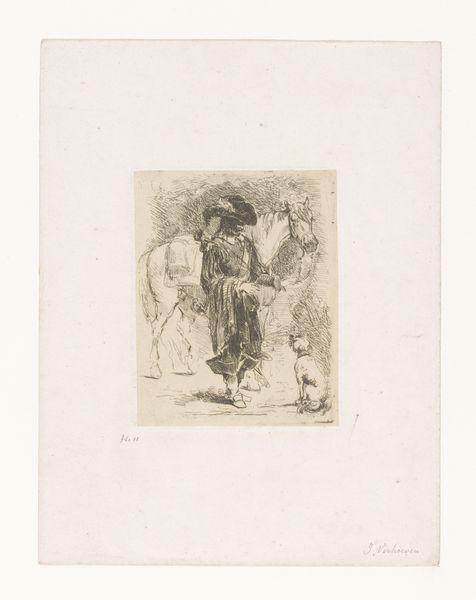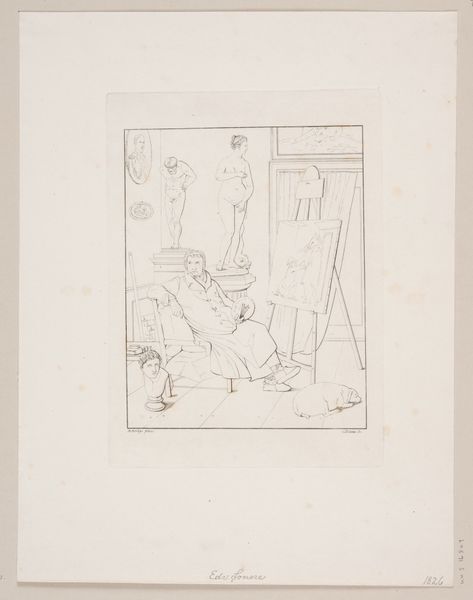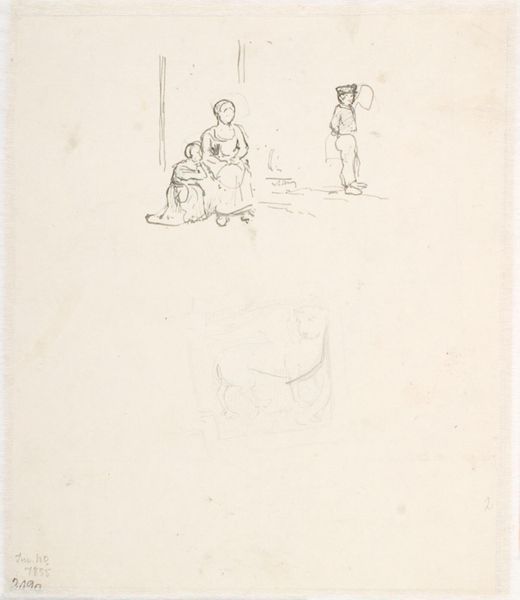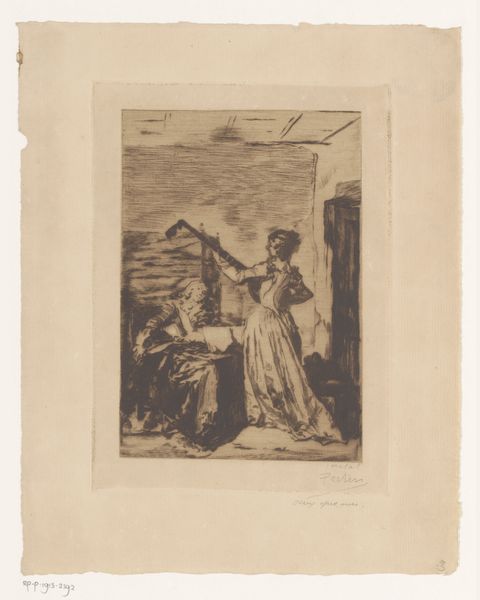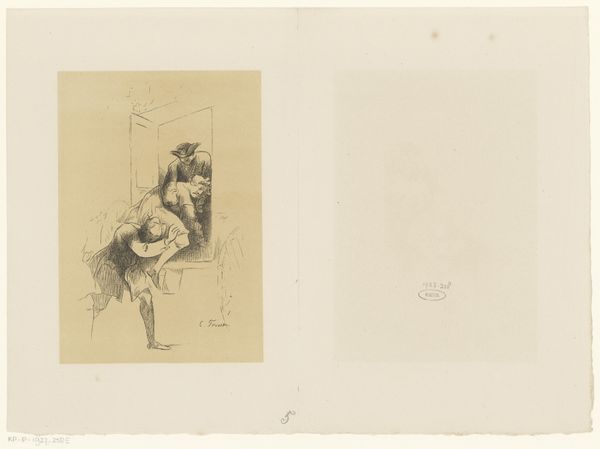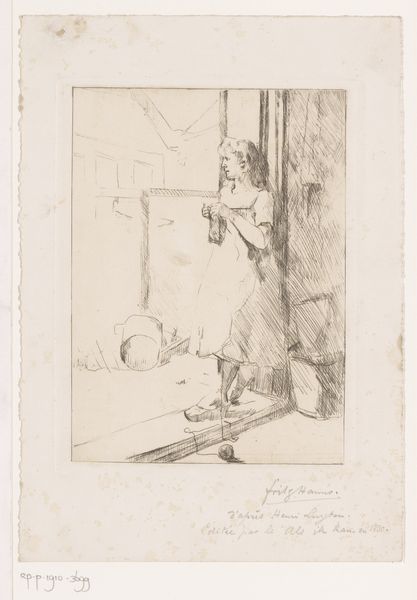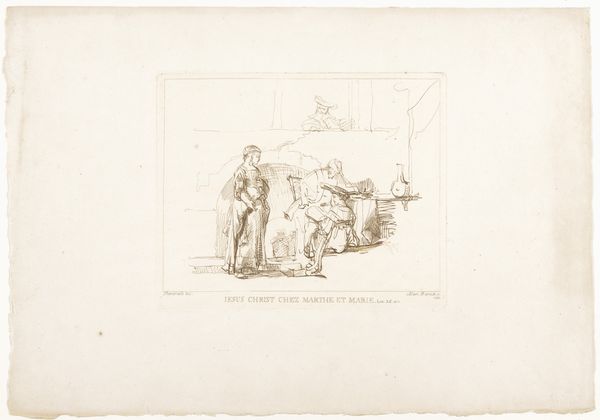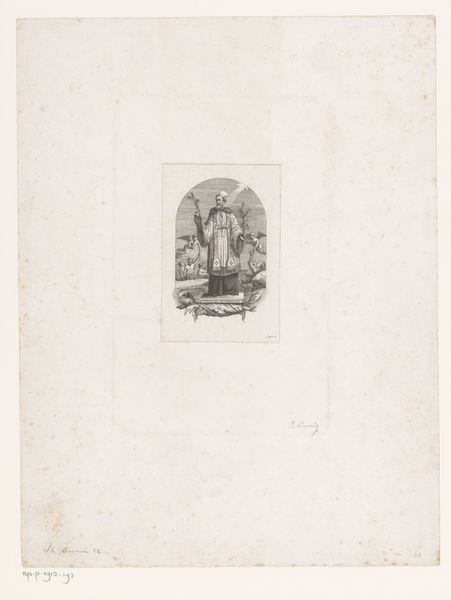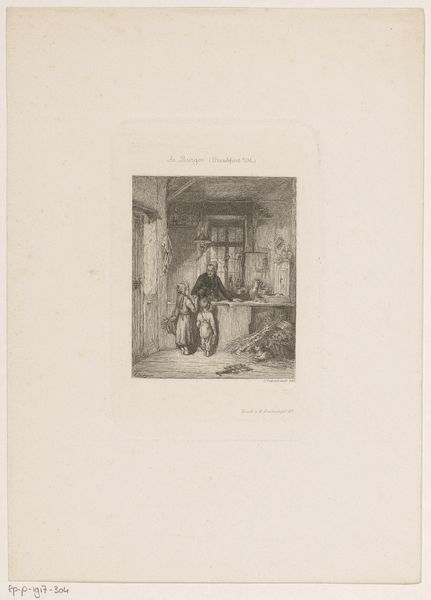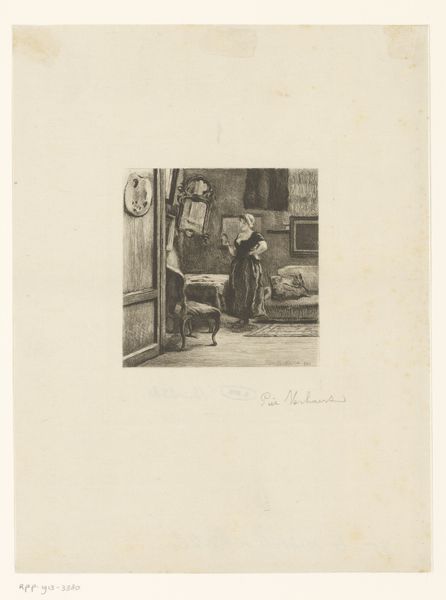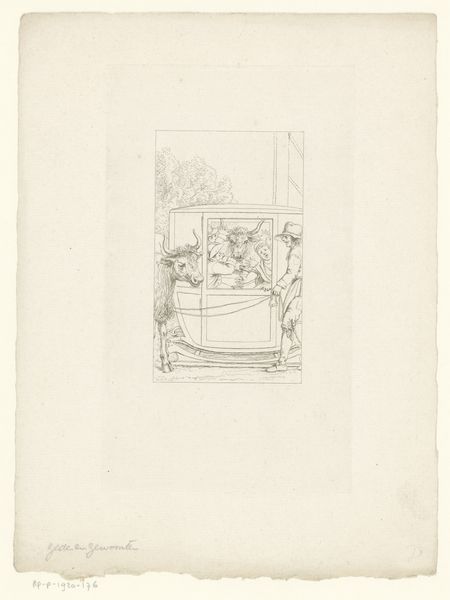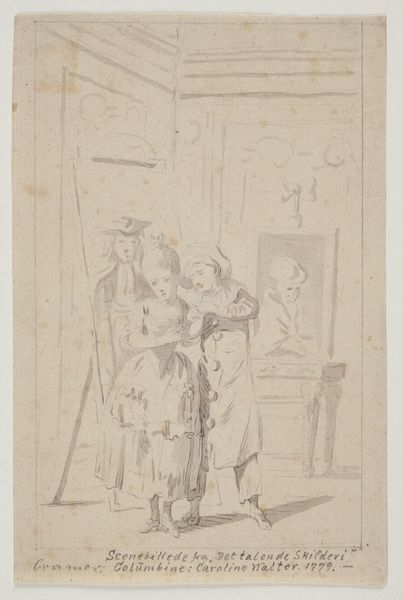
drawing, lithograph, print, engraving
#
drawing
#
lithograph
# print
#
figuration
#
romanticism
#
line
#
genre-painting
#
engraving
Dimensions: 259 mm (height) x 173 mm (width) (bladmaal)
Curator: Welcome. We are looking at Adolph Kittendorff’s 1845 lithograph, “Rumlepotten,” a title that roughly translates to “Rattle Pot.” Editor: My initial reaction is that it feels almost dreamlike. There is something both charming and slightly melancholic about this scene depicted with such fine lines. The softness, achieved through the lithographic process, adds to that sentiment. Curator: Kittendorff was deeply involved with the burgeoning printmaking scene in Copenhagen. Notice how the stark lines articulate a sense of Romantic longing typical of the period, but the print also implies something about its cultural moment. The use of lithography, with its increasing availability, made images more accessible to the general public, creating wider access to genre paintings. Editor: Genre painting often freezes a moment that encapsulates a whole world of meanings, doesn't it? These two children peering into what appears to be a kitchen cabinet - a suggestion of childhood curiosity mixed with the mysteries of adulthood that were concealed. The 'rumlepotten,' suggests a symbol for secret spaces and hidden sounds, sparking curiosity and imagination. Curator: Exactly! And consider the material reality of creating an image like this at the time. Kittendorff not only had to be a skilled draftsman but also deeply involved in the industrial processes that brought this print into being. The limestone he used for lithography, the inks, the paper – all these materials speak to the industrial changes of 19th-century Denmark. Were these prints destined for art collectors or for everyday people to stick on their walls? That question has serious implications! Editor: I find the symbolism in that ambiguity incredibly compelling. Childhood innocence framed by potential adult mysteries, visualized in a style embracing linear sharpness to produce dreamlike softness - it encapsulates this yearning so representative of the Romantic movement. And it all echoes a sense of time elapsing, leaving fragments of childhood suspended within cultural memory. Curator: Ultimately, thinking about lithography moves us to reconsider ideas about 'original' works versus mass production, which inevitably democratized and also commercialized artistic labor. Editor: Precisely, these subtleties speak to something universal, the passing of childhood moments which echo with larger societal undertones, rendered by the artist and echoed in ourselves today. Curator: Indeed. A compelling image both technically and conceptually.
Comments
No comments
Be the first to comment and join the conversation on the ultimate creative platform.
